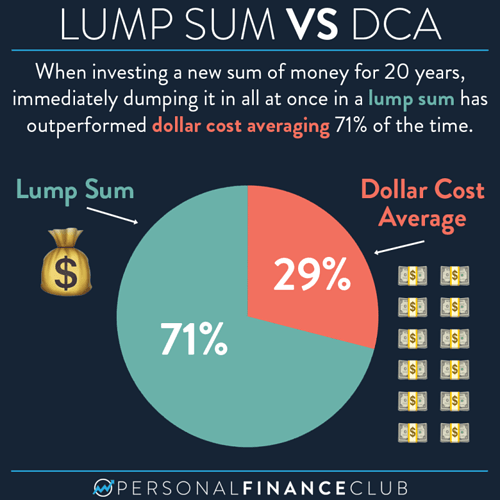Originally published at: https://www.personalfinanceclub.com/what-performs-better-lump-sum-investing-or-dollar-cost-averaging/
I spent the weekend building a tool to compare the historical performance of “lump sum” investing to “dollar cost averaging”. It analyzes 150 years of the US stock market based on the dollar amount, dollar cost averaging period (in months) and investing timeframe (in years) that you provide. You can play with it here!
People love the phrase “dollar cost averaging”. I’m not sure why, but I think because it sounds cool. But for the sake of this post, I think it’s important to differentiate “dollar cost averaging” from regular old “periodic investing.” If you’re investing part of your paycheck every month, that’s “periodic investing” or simply “investing early and often.”
But if you come into a new larger sum of money and you decide to invest it, you have a choice. You can dump it in the market all at once when you get it. That’s called “lump sum” investing. OR you can split up the lump sum into smaller pieces, then invest those pieces on a fixed schedule.
For example, if you got a $12,000 windfall, you could split it up into twelve $1,000 chunks and invest them monthly for a year. THAT is dollar cost averaging. It basically gives you the average price over the year instead of the price on the first day. Since the market is usually going up, more often than not you’re better off doing the lump sum on the day you get the money.
That said, dollar cost averaging isn’t BAD. Even though lump sum wins 71% of the time (in the scenario 20 year, 12 month scenario), the average performance is only 4% better total over the 20 years, or about 0.25% per year. Not devastating or anything. The important thing is getting your money invested one way or the other and leaving it alone.
As always, reminding you to build wealth by following the two PFC rules: 1.) Live below your means and 2.) Invest early and often.
-Jeremy
p.s. if an enterprising redditor wanted to post this to reddit, it might be good for some free karma!
via Instagram


